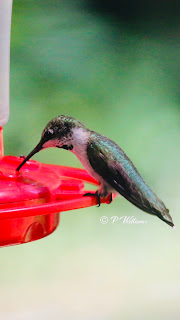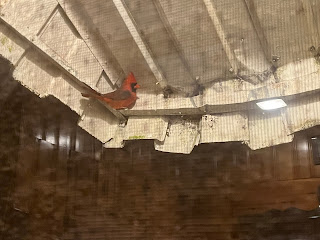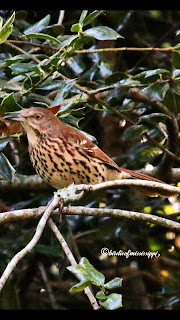IS IT FACTOR OR FICTION?
By Peggy Williams AKA Birdie of Mississippi
It seems as though all the hummingbirds have now migrated. This year due to the warmer weather I had
Ruby Throated Hummingbirds coming to my feeder until October 21st. I kept my feeders out because I continued to
have hummingbirds come to eat and because I had also made the decision to leave
my feeders for honey bees to have winter food.
When I posted photos on Facebook of my hummingbird visitors I had
several people tell me that I needed to bring my feeders inside. Their comments said that if I continued to
leave my feeders hanging then hummingbirds would camp out at my house and not
migrate south for the winter. If the hummingbirds missed their migration time,
then they would stay, freeze to death and I would be the one responsible for
their death. I want no hummers on my conscience, so - Is this fact or
fiction?
Since I am a “bird fancier” not a professional, I checked with the
National Audubon Society to give me clear direction as to what was the right
thing to do. Their internet advice is “You can leave your feeders out for as
long as you have hummingbirds around.
You can even continue to provide the feeder after your hummingbirds
disappear – late migrants or out-of-range species can show up into early
winter. “ In Attracting Birds to Southern Gardens by Pope, Odenwald, and
Fryling, Jr. they say that “the migration of Ruby Throated Hummingbirds is
triggered by changes in day length, which in turn triggers release of the
hormones that allow them to store fat for fuel and that stimulates them to
migrate. Therefore, removal of food supplies that the birds have been using to
accumulate reserves of fat before migrating could conceivably reduce the birds’
chances of leaving on time.” These
biologists say that the hummers will leave when they are supposed to and the
only way to prevent them from leaving is to put them in a cage! If they are
truly lagging behind then they are most likely sick or injured birds that
cannot leave and these feeders left out beyond the normal time helps them have
recovery time and increases their odds of survival.
They also advise us to be sure and change the nectar regularly and
keep the feeder clean, even if the nectar goes untouched. Birds can receive bacterial and fungal
infections from dirty feeders which can even result in death, so as Orange
County Register.com says – “Please do it right or don’t do it at all.”
Doing it right can be time consuming and also a learning experience
for us amateur Birdies. It’s sad to say, but some of my experiences have been
by trial and error. I have found out along
the way that some things aren’t the right way after I have done them! When I first began, I bought hummingbird
nectar from the pet department and they put red dye in the nectar. Like most people I thought the red color was
necessary to invite the hummers to my feeder….wrong! The red color of the feeder itself is plenty
enough color to attract the birds.
Homemade nectar is better for them, but we must be careful if we make
the nectar because mistakes can have serious side effects. The proper proportions for hummingbird nectar
are 1 cup of sugar to 4 cups of water.
Too much sugar in the nectar is hard on the hummer’s liver and kidneys
and too little sugar won’t provide the necessary calories needed. Also, never
use artificial sweetener or honey. I
know it will be a while before hummingbirds return, but please remember all
these tips for next spring when our tiny visitors return.
My photos may be viewed & “LIKED”
on Facebook, Instagram and Pinterest - “Birdie of Mississippi”.
E-mail: birdieofmississippi@gmail.com
Read my Blog @
http://www.birdieofmississippi.blogspot.com





Comments
Post a Comment